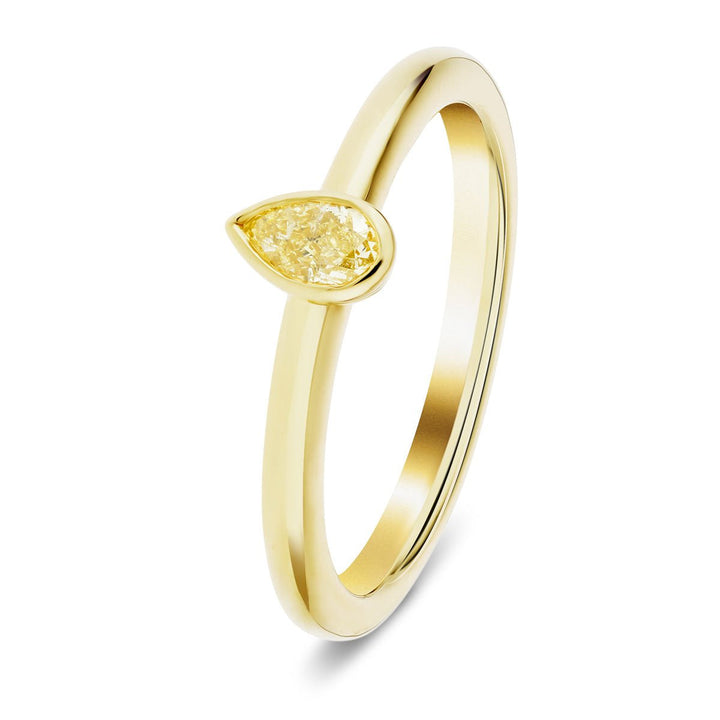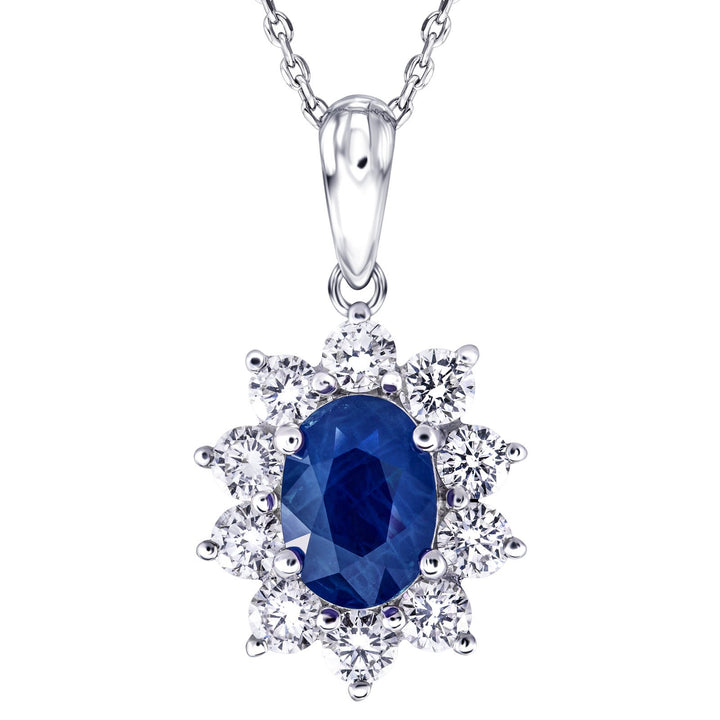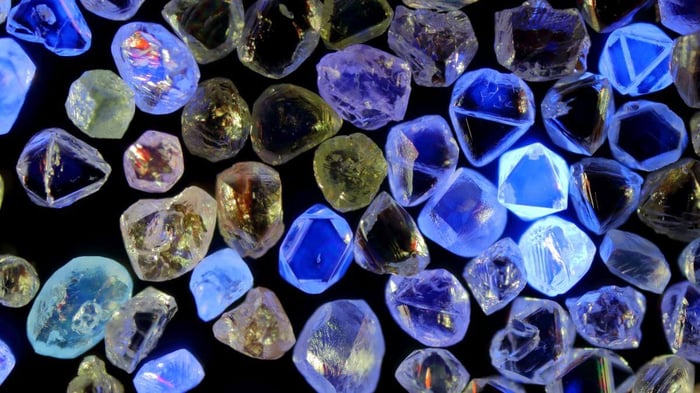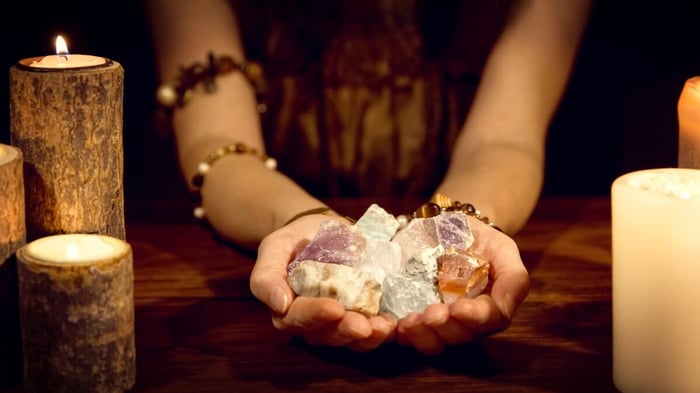Diamond Fluorescence, Fire And Colour - More Than Just The 4Cs!
When we go shopping for diamond jewellery, some words often pop up on labels and descriptions. Consumers often do not understand their meaning or importance, which gives jewellery retailers an opportunity to bamboozle buyers. By covering diamond fluorescence, fire and colour and introducing them to you, we hope to help you become an informed buyer, much more immune to confusion and bafflement.
Diamond Fluorescence
The majority of us are familiar with the four characteristics of diamonds known as the "4 Cs": cut, colour, clarity, and carat weight. However, certain diamonds have an additional quality that is referred to as fluorescence. The majority of diamond grading laboratories include the measurement of this effect as part of their comprehensive analysis and evaluation of the stone. The proper term for this phenomenon is photoluminescence. Boron, a chemical sometimes found in diamonds in trace amounts, is responsible for the gemstone's characteristic fluorescence. Boron is "turned on" by ultraviolet light, or "black light," which many of us are more familiar with, and this causes the diamond to have a very faint bluish glow.
The degree to which blue can be seen in the diamond is used to determine the level of fluorescence present: none, very faint, medium, medium blue, strong, strong blue, and intense blue. Fluorescence was once a highly desired feature by buyers of diamond jewellery, and there was a strong demand for blue-white diamonds at the time. The blue colour was used to denote the fluorescence of the diamond, and the colour white was used to refer to the general colour of the body of the stone. This preference has become less common over time as a result of a shift in consumer preference toward more colourless stones.
Over the course of the past few years, there has been something of a reversal in the tide of public preference toward the blue-white diamond.
Before making a purchase of a diamond, you should make certain that you examine it under various lighting conditions, including natural sunlight, fluorescent light, and the bright lights used in jewellery stores. Some diamonds that have a fluorescent quality will become cloudy in the sunlight, and others will even glow when you take them out onto the dance floor.
Cruz de diamantes de talla redonda y talla baguette de 2,30 quilates en oro blanco de 18 k

€4.077,95
Un brillante símbolo de fe, este colgante de cruz de diamantes es una excelente opción para el día o la noche. Hecho a mano por nuestros hábiles artesanos del Reino Unido en impresionante oro blanco de 18 quilates. Con un… read more
While you might be happy to have your diamond jewellery glowing in nightclubs, most of us are less happy to have diamonds that look hazy and unclear under bright sunlight that has a lot of UV.
Over time, colourless diamonds have become increasingly rare and expensive. The colour grades of D (colourless) to G (almost colourless) are going to become increasingly hard to come by at a reasonable price. Suppose you’re buying a diamond with an H or lower colour grade. In that case, some fluorescence may actually be a good attribute for it and increase your stone’s value and attractiveness, as the blue fluorescence can offset any other colour issues the stone will have, such as a yellowish hue.
Although some diamonds have a yellow or orange fluorescence, most reputable jewellers will recommend against a diamond with this quality unless you’re buying a coloured diamond in the same hue, as a similar fluorescence will enhance and intensify the diamond’s inherent colour.
Diamond Fire
When referring to a diamond, the word "fire" is frequently used, but what does this term mean? The ancient Greeks had the belief that the fire that could be seen within a diamond represented the never-ending flame of love. The light scattered inside a diamond and shows up as rainbow-like flashes of colour is referred to as fire. In most cases, the fire of a diamond can be seen in places with lower levels of light, such as restaurants or nightclubs. The amount of fire produced by a stone is proportional to how it is cut and faceted. Because they were cut with steeper crown angles and flatter tables to the facets, older cut diamonds give the appearance of having more fire than modern diamonds.
The diamond's brilliance and scintillation are two additional qualities that are considered during the evaluation process. To be considered brilliant, a diamond must possess both brightness and contrast. In the diamond trade, brilliance is referred to as return-of-light because it describes how light is reflected back to the observer. Most people have a favourable reaction when they see it in a diamond, and many jewellers consider it the most important quality a diamond can possess.
Scintillation is another property that can be attributed to diamonds. The phenomenon known as scintillation describes the way light travels away from a moving stone. The quality of the light that is scattered when the diamond is motionless is referred to as brilliance. On the other hand, scintillation is what can be seen when the diamond is moving through the light. They share many similarities, but fire is distinct in contrast to these others.
How a diamond is cut will determine how much fire or brilliance it possesses, and frequently, one will need to make a compromise to prioritize either fire or brilliance.
Diamonds are cut, for the most part, with the intention of maximizing their brilliance and scintillation rather than their fire. Keep in mind that purchasing a diamond is an investment but whether you enjoy it or not is what really matters in the end. When weighed against the most important factor, which is one's own preferences, qualities such as brilliance and fire pale in comparison.
Aretes de Diamante Princesa 0.50ct Calidad G/SI en Oro Blanco 18k

€1.487,95
Nuestros artesanos del Reino Unido toman oro blanco brillante de 18 quilates y lo fabrican a mano para contener medio quilate de diamantes resplandecientes, con todo el cuidado que se merece su ser querido. Para asegurar su felicidad, todas nuestras… read more
Diamond Colour
The absence, or presence of colour, is one of the most crucial aspects to consider when evaluating a diamond according to the 4Cs. The level of colour in a diamond is denoted by a letter grade, with D being the highest grade for a colourless diamond and F being the next highest grade.
Why did the GIA choose the letter D rather than C, B, or A? According to what we've been told, the decision was made to begin the process of grading diamonds for colour using this scale with a "D” so that there would be room for the extremely remote possibility that a diamond would be discovered that was even more perfectly colourless than had been seen up to that time. To this day, no such diamonds have been found!
The colour grades D, E, and F, have the least amount of hue, making them the rarest. Gemmologists are the only ones who can discern the subtle colour shifts within the stone. The grades G to H are referred to as near colourless, and the difference in appearance between them and a higher-grade diamond is only visible to the untrained eye in a side-by-side comparison. When you choose a near-colourless G or H colour-graded diamond, you get the level of whiteness you desire without paying for perfection that cannot be observed and appreciated.
This makes the purchase of a near-colourless stone an excellent investment. The grades I through J are nearly colourless as well, although not to the same extent as G and H. These can be an excellent value, but more care must be taken in their setting and the precious metal they are made of in order that the slight yellow colour is concealed rather than accentuated.
Anillo de compromiso con solitario de pera y diamante amarillo de 0,25 quilates en oro amarillo de 18 k

€840,95
¿Es ella la pareja perfecta cuando se trata de romance y pareja de por vida? ¡Este impresionante anillo de compromiso es único y la hará decir "Sí, acepto" con estilo! La banda de oro amarillo de 18k y el hermoso… read more
If you want to avoid being dissatisfied, we suggest that you stick to the G and H grades. The vast majority of our diamond jewellery is available in G or H colour grade.
As one moves up the colour grading scale from A to Z, there is a corresponding increase in the amount of colour. A low colour-graded diamond is not the same as a fancy or canary diamond. Fancy diamonds are not graded in the same way as white diamonds. As a buyer, you should not be confused about choosing a low colour-grade white diamond rather than a genuine fancy colour diamond!
Diamonds with fancy colours are given a grade different from white diamonds and are also extremely desirable among collectors. The use of white diamonds, which offer a contrast in hue that draws attention to the fancy-coloured diamond, brings out the diamond's full splendour and makes it look even more beautiful. Think about the fact that the Hope Diamond, considered one of the most famous diamonds, has a deep blue colour. Red diamonds are the rarest of all coloured diamonds, making them the most desirable. The last large-scale diamond mine producing red diamonds in Australia has recently ceased production, meaning that red diamonds will become even rarer and more costly in the years to come.
The colours that are seen in coloured diamonds are caused by impurities that are found in the diamond’s crystal lattice structure. Diamonds can be found in a wide variety of colours, some of which include steel grey, white, blue, yellow, orange, red, green, pink, purple, brown, and black. Please check our information about fancy coloured diamonds here. This is a fascinating topic all on its own!
Fire, Fluorescence, Colour And The 4Cs
Of diamond fluorescence, fire and colour, only the last attribute is covered by the 4Cs of diamond quality. Fire, fluorescence, and the other attributes we have touched upon in the article above are not part of this system, but they can be important to you. As we have noted, fire is a subjective preference that can be optimised only by downplaying brilliance, which most diamond jewellery buyers value very highly. If fire is something that you value over brilliance, then you should ask for guidance from the jewellery seller, who may be able to make suggestions for the diamond shape and cut that will give more fire.
Collar de diamantes G/SI de 1,00 ct y 0,60 ct con zafiro azul en oro blanco de 18 k

€1.754,95
Este exquisito collar es un complemento perfecto para cualquier colección de joyas. Con un impresionante color azul, este majestuoso collar será un punto focal en cualquier atuendo. Esta es una pieza atractiva impresionante y única. La piedra azul radiante está… read more
Most white diamonds sold by jewellery retailers will have the existence of fluorescence noted on the description and labelling of the jewellery. Still, the truth is that you will only be able to assess this attribute when the jewellery is in your possession and worn in your life circumstances. That’s where the All Diamond 30-day return and exchange program comes into its own! You can choose the jewellery that appeals to your taste and budget and ensure that the piece is just right for you and, if necessary, return or exchange it.
The importance of fire and fluorescence should not be understated. For the people who desire them, they are vital to the choice of diamond in their jewellery. However, for most buyers, they are less important than colour, sparkle, cut quality and brilliance. If you did not previously know about diamond fluorescence, fire and colour, now you do, and you can look more closely and make the right choices in the next diamond jewellery that you buy!
You can see our full range of diamond jewellery here. If you are interested in fancy yellow diamonds, please check out our collection here.




